Learn the difference between direct sowing seeds and planting transplants that have been started from seed. Then, listen or read to find out which plants actually prefer to be direct sown rather than started indoors.

This helpful guide will help you understand the best planting process, whether you are planting in a raised bed or container gardening, along with knowing what seeds have a better germination rate when started inside or out, no matter what zone you live in.
Also, find an additional section of gardening tips and processes I have learned through my years of gardening to help you feel confident in your garden endeavors, including my guide (and podcast episode) on how much to plant per person for a year’s worth of food.
This post has been updated to include two podcasts on direct sowing seeds, the latest (Pioneering Today Podcast episode #469) is with guest Don Tipping from Siskiyou Seeds.
The other is a solo podcast of mine that dates back to 2014! You can download and listen to them both!
Table of Contents[Hide][Show]
- My History and Love for Gardening
- What is Direct Sowing Seeds?
- Preparing Soil for Direct Sowing
- Which Crops to Direct Sow
- When to Direct Sow Vegetables
- Supplies Needed for Direct Sowing Vegetables
- How to Direct Sow Vegetables (Step-by-Step)
- Transplanting Crops
- FAQs
- Where to Find Don Tipping
- More Posts You Might Like
My History and Love for Gardening
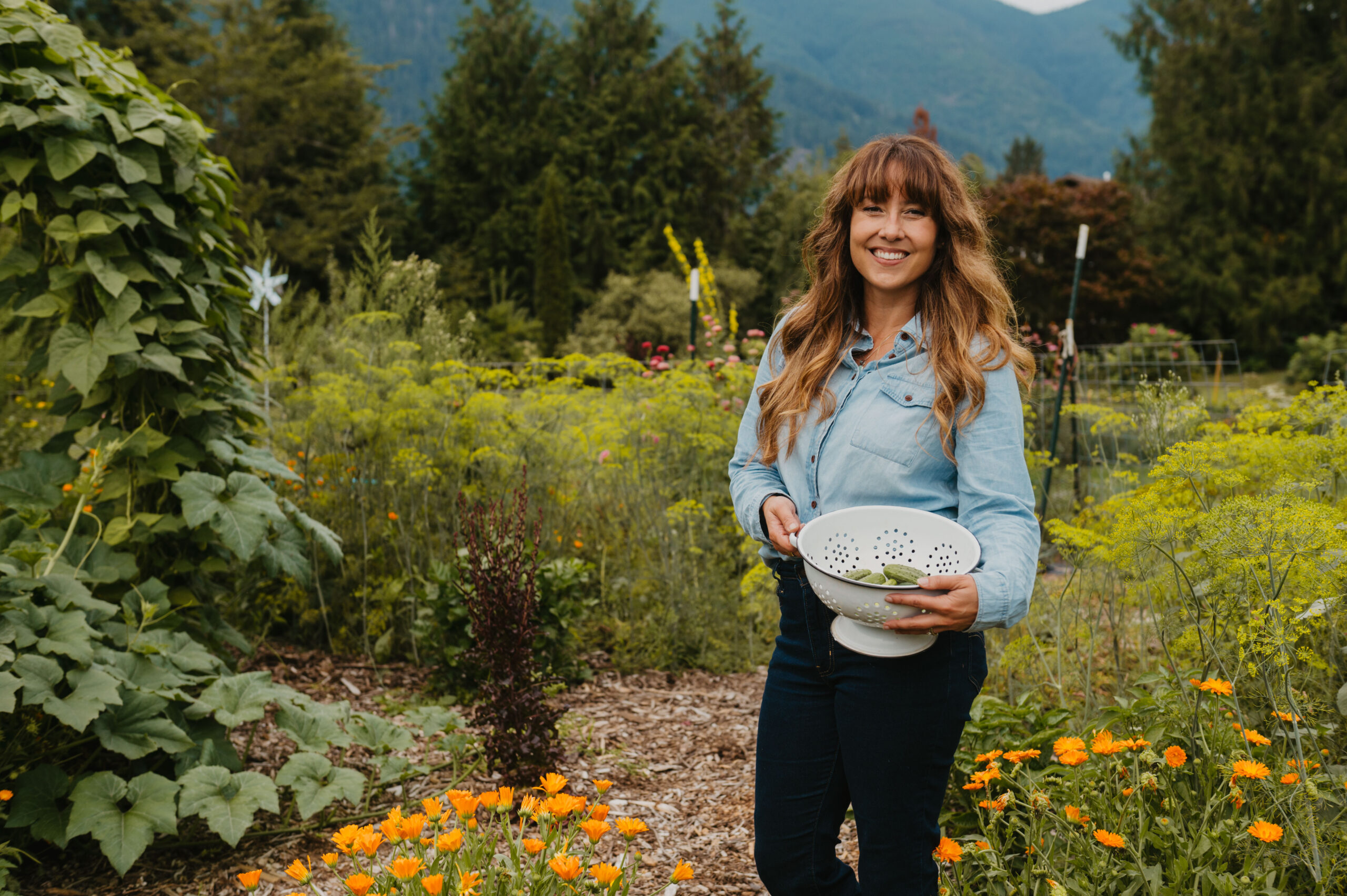
I grew up in a family that always had a large vegetable garden. For me, gardening has been a part of my life and comes naturally. I enjoy gardening so much that I’ve written a few books to share what I’ve learned with others.
The Family Garden Plan will help you plan your garden from beginning to end. It has charts to help you stay organized and gives space for records and information to save from year to year. If you are inspired to get back to the basics and live a simpler life, read The Made From Scratch Life and my updated Home and Hand Made book.
My family’s goal of living self-sustainably is a work in progress. In fact, we’re now calling it “community sufficiency.” We continue to make small steps in that direction every year.
We’re now raising pigs and raising grass-fed beef cattle. We also raise meat chickens along with raising egg-laying chickens. For a while, we even kept a family dairy cow.
My grandparents moved from North Carolina to the Pacific Northwest in 1941 during the Depression. They traveled across the country on the back of a flat-bed truck with a few other families.
Obviously, they were limited in space, but one thing they brought with them was their heirloom seeds. These seeds are invaluable and have been with us for generations.
What is Direct Sowing Seeds?
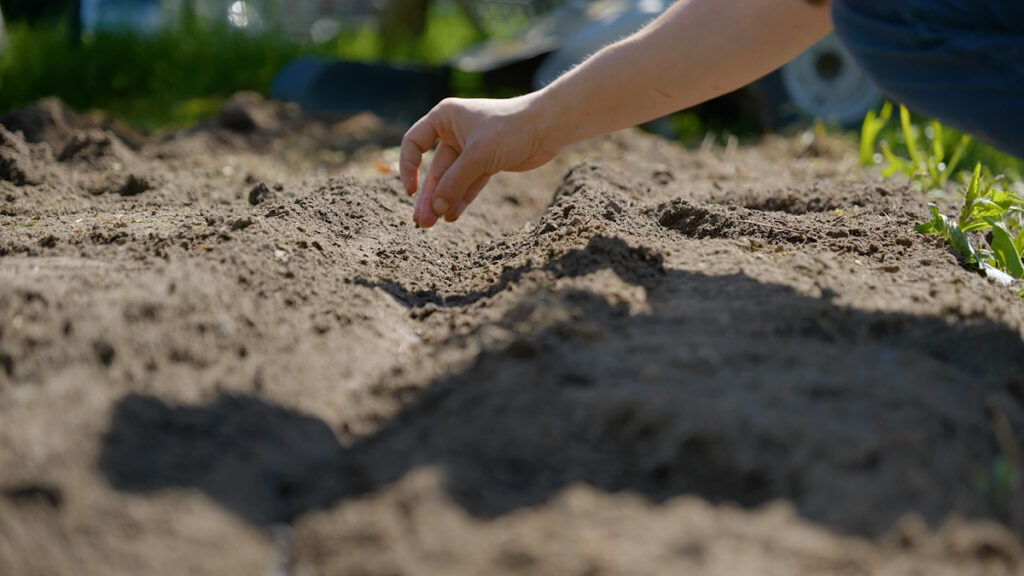
Direct sowing seeds is simply planting seeds directly in the prepared garden soil. Depending on the seed, there is a specific temperature at which the seed will germinate and grow.
Most gardeners plant their crops using both the direct-sow method and the transplanting method (also known as plant starts). The method you choose depends greatly on the growing zone you live in and the crop.
Some crops do better with a head start before planting out in the elements, while others don’t like their roots messed with and do better when direct sown into the soil (more on this below).
Seeds that are sown directly will need to withstand the elements in order to get started. Do your due diligence in researching your local growing zone to make sure you understand the best times to plant seeds.
Preparing Soil for Direct Sowing
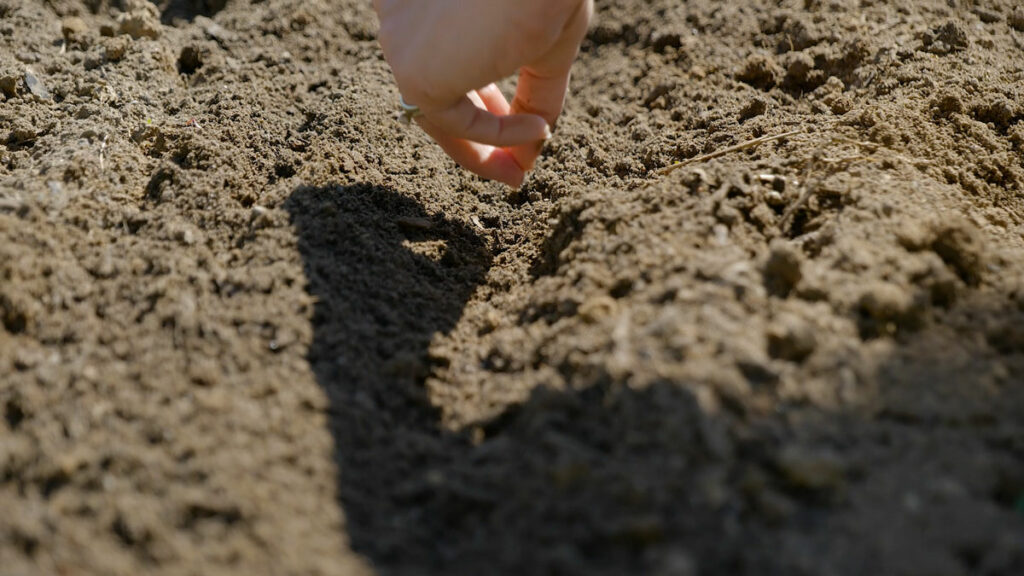
Soil tilth is very important when direct sowing seeds, especially small seeds like carrots. Soil tilth is the condition of the soil and how well it’s suited to support plant growth.
Soil with a good structure and plenty of organic material, a loose, crumbly texture that both drains well and holds onto water, is ideal for direct seed sowing.
Soil that’s compact, chunky or has large pieces of organic matter (think large woodchips) may hinder seed growth once the seeds have germinated.
- To prepare your soil for planting, till or rake the soil multiple times to break up any large chunks.
- If the soil still isn’t fine enough, consider adding some topsoil or well-sifted compost to the row and plant directly into that.
Which Crops to Direct Sow
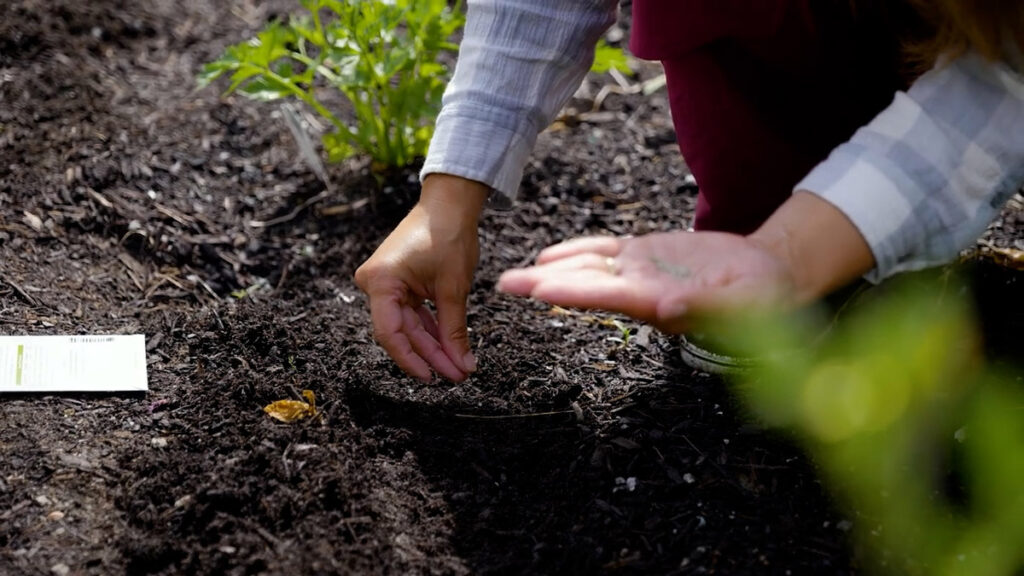
Below is a list of the best crops to direct sow. I’ll also share tips for the best germination and growing techniques.
- Beans – There are two types of beans…bush beans and pole beans. If you are limited in space, try to find a compact heirloom bush bean variety. Pole beans are my favorite, and you can learn more about how to grow pole beans here. They will need to have a structure to grow on. If they aren’t given something to vine around, they will stop growing. We have tried three different methods:
- A vertical or arched trellis has become our preferred method, both to save space in the garden and for ease of harvesting.
- Placing a single stake by each plant for the vine to grow on.
- Placing a pole or stake at each end of the row and tying a string at the top and bottom of each pole. After that, take regular garden twine and design a “V” trellis crisscrossing back and forth for the vines to grow on.
- Beets – Beets are a cool-weather crop and will be one of the first things you can direct seed. Make sure to plant them before the soil is hot, or they will rot in the ground. Find my step-by-step beet planting tutorial here.
- Carrots – Carrots also like cooler weather. The seeds are super-tiny, so a benefit of direct sowing is not having to separate individual seeds. However, you will have to thin out the carrot rows after they are growing to allow for proper growth. Use this germination hack for starting carrot seeds (and other small seeds) that like to wash away when watering.
- Corn – Plant corn one (or two) inches deep. After it has sprouted, thin it to one foot apart, corn will have small ears if the stalks grow too closely together. If you’re having problems with birds pulling the shoots to get to the seed, plant two inches deep so the seed is rooted a bit stronger in the soil.
- Peas – Direct sow peas in early spring, as they too like cooler weather. They will also benefit from some trellis support.
- Radishes – Radishes are fun to grow and very prolific. Try sowing them every two weeks for a continuous harvest during the summer.
- Spinach – Spinach does well in cooler weather, and it can even handle a light frost.
- Squash – Squash has two different types: summer and winter. Plant squash in hills instead of rows. You can make a hill by heaping up garden soil into a 1-foot-high by 3-foot-diameter pile. Sow six to nine seeds per hill at the top of each mound. After they sprout, thin them down to three of the strongest plants and discard the others. It’s important to wait to plant squash seeds until the soil temperatures reach 65°F, or you risk the seeds rotting in the soil.
- Harvest summer squash early when the skin is soft and pliable.
- Harvest winter squash later in the season. Make sure to bring in the winter squash before the first hard freeze. It will do well in cold storage for a few months such as in a root cellar. Learn more in detail about curing, storing and preserving pumpkins and winter squash here. Pro-tip: Press your thumbnail into the skin of winter squash. If it can’t pierce through, it is ready to harvest.
When to Direct Sow Vegetables
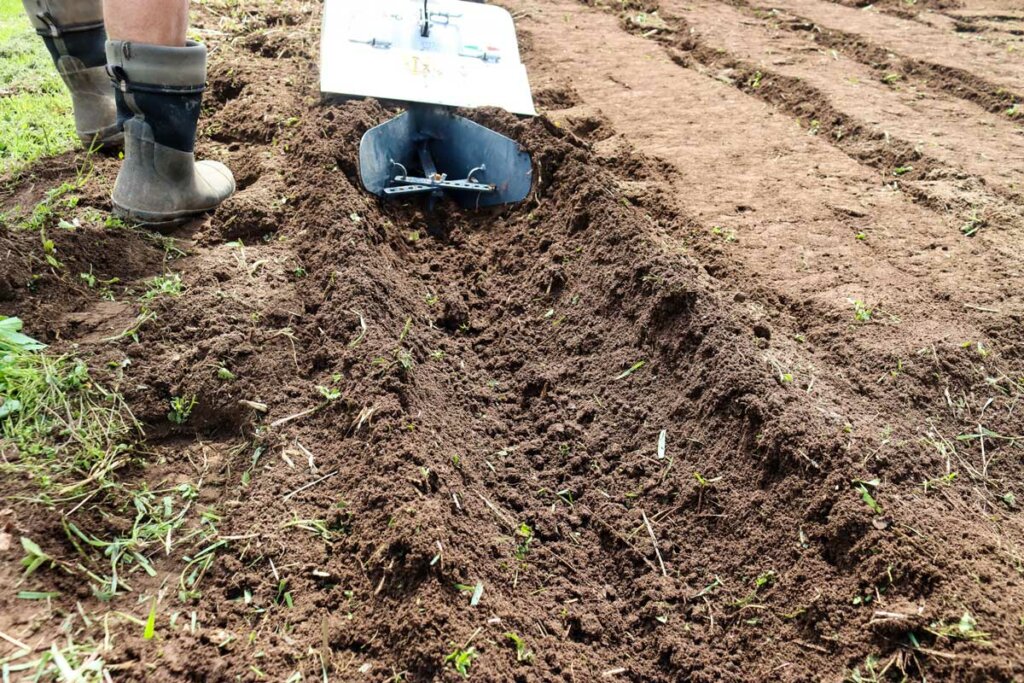
Knowing your growing zone and familiarizing yourself with resources explaining your growing season will help you choose the best time to plant your garden. Check out my gardening by month series: gardening in March, gardening in April, gardening in May, and gardening in June where I break down what I do in these months to prepare for planting time.
Supplies Needed for Direct Sowing Vegetables
- Garden Seeds – After you have created your garden plan, and the soil temperature has reached 60°F it’s time to get those seeds in the ground.
- Prepared Garden Beds – Remember to follow the steps outlined above in the monthly tasks posts to have your soil ready for seeds. Learn more about soil health here.
- Marking String – You will need something to help you mark straight rows. One method is placing stakes at each end and tying garden twine between the two.
- Shovel or Garden Trowel – Use whatever tool works best for you to trench a straight line in the dirt.
How to Direct Sow Vegetables (Step-by-Step)
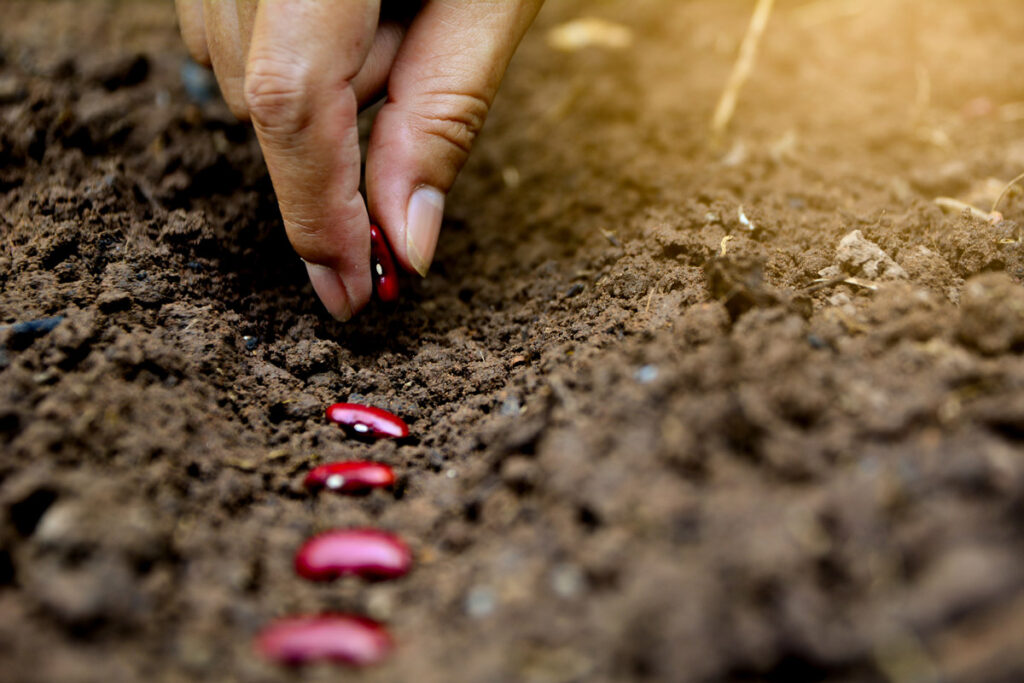
Direct sowing crops will look different based on the crop you’re growing. Be sure to read through the section above called “Which Crops to Direct Sow” for specific information. The basic instructions for direct sowing seeds is as follows:
- Mark the rows as straight as possible.
- Learn how to read seed packets to know the depth and seed spacing width to be planted. Keep in mind, these are generally for large-scale farms and you can usually get away with planting more densly in a smaller vegetable garden.
- Trench a line in the garden soil at that approximate depth level, and place the seeds in the row. A general rule of thumb is to plant a seed twice as deep as the seed is wide.
- Lightly tamp the garden soil back over the row and water lightly so as not to wash away the seeds.
Transplanting Crops
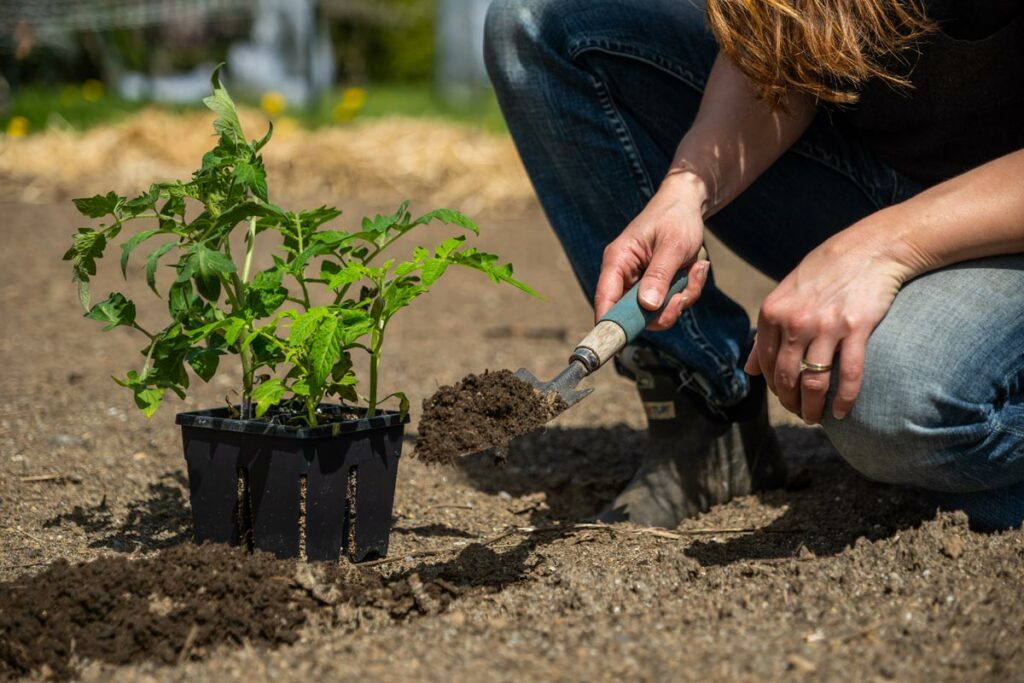
Instead of direct sowing vegetables, transplants are plants that are started indoors under lighting before being planted in the garden. The seeds germinate and grow in a protected environment.
You will have a little more control over the outcome of the plants because the initial germination takes place indoors and allows the plant to be established.
Insects tend to like baby plants for a snack, so a larger, more mature plant will not look as appetizing.
Why would you choose to start seeds indoors instead of direct sowing? This is purely due to extending the garden season. Where I live, we’d be hard-pressed to get a tomato to grow, from seed, if we waited to plant it until the soil was warm enough.
Our growing season simply isn’t long enough. Therefore, there are two vegetables that I always start inside and transplant outside in warm soil:
- Tomatoes – My growing season in the Pacific Northwest is too short for tomatoes to germinate outside. I start seeds indoors in March and move them outside after our last frost date has passed. Check out my 10 tomato-growing tips for added success!
- Peppers – I also start these inside, but this can vary somewhat depending on your growing zone. If your growing season is long enough to allow you to wait until the soil temperature reaches 70°F, you can start peppers outside. For us here in the Pacific Northwest, this is not possible. The weather can get cold too soon for them to reach maturity.
FAQs

Germination is the process of growth after the seed is placed in soil and watered. Learn more about how to speed up germination for faster growth here. If the soil temperature isn’t right for germination, you risk the seed never sprouting (germinating) or rotting in the soil. Some seeds like cooler soil, while others like warmer soil. Get those mixed up and you’ll have poor germination rates.
For some seeds, the recommendation is to soak them in warm water for 12 hours right before planting. This will shorten the germination period and encourage a faster and better germination rate. Pro-tip: If your soil is not warm enough, and you soak your seeds, they will rot before they have a chance to sprout.
A growing season is the period of time each year when temperatures and rainfall are right for plants to grow. This time period varies depending on the part of the country or world you live in but is generally defined between the last frost of spring and the first frost of fall. You can utilize methods to extend your growing season with items like high tunnels, row covers and greenhouses.
Managing weeds is probably the gardener’s biggest complaint. It can especially be difficult when waiting for seedlings to sprout, not knowing whether a plant is a weed or your crop! In fact, in my interview with Don Tipping, he mentioned that the biggest labor cost for farmers is weed management, which is why many large farms use pesticides.
The best method for managing weeds is to keep them from going to seed. As the saying goes, “one year’s seed, seven years’ weed.” So keeping up on weeding when they’re small is your best bet.
Beyond that, use a garden hoe to weed between the rows while the seeds are germinating. Then, once your seeds have germinated, you can hand weed the row, and it should be clear what’s a weed and what’s a crop.
One tip that Don gave is to cover a small section of your row with a window to encourage growth. When you see your seeds germinating under that window, you can use a flamethrower on the rest of the row to burn the weeds, knowing your seedling is just under the soil and protected from the flame.
Companion planting is a method of using different plants to complement and benefit each other. I call this God’s pest control method – no need for chemical sprays! If plants attract similar pests, don’t plant them beside each other.
An example of companion planting is “Three Sisters Farming”, a method Native Americans used. Corn, beans, and squash complement each other.
Check out this post on companion planting strategies to learn how to implement this method into your garden.
Rotating crops from place to place in your garden improves the health of the soil, helps combat pests, and optimizes the nutrients in the soil.
Pro-tip: Take a picture of your garden when everything is in full bloom. Reference it next year when you are planning your garden to ensure you rotate the crops correctly.
Gain a better understanding of using crop rotation methods in your garden here.
A high tunnel is similar to a greenhouse. However, the plants are planted in the garden soil. Plastic surrounds the sides of the tunnel but will lower or raise to control airflow and for protection from wind and sun.
Hardening-off is a practice required for transplants. Grown inside in a protected area, they will need to ease into life out in the elements. Start by placing them outside for one hour a day, increasing by one hour increments for a period of ten days.
Birds think seedlings look like bugs or worms. They will often pull them out but not eat them. I like to place string right above the row as soon as I plant the seeds. This seems to distract the birds long enough to get the seedlings past the tender stage. Be sure to remove the string when the plants are around two inches tall.
Where to Find Don Tipping
You can find Don and learn more about Siskiyou Seeds on his website. Check out his Seed Academy and follow him on Instagram, Facebook and YouTube.
More Posts You Might Like
- Seed Packet Information – How to Read Seed Packets for Gardening Success
- Best Way to Germinate Seeds – How to Germinate Seeds Faster
- How to Grow (and When to Pick) Pole Beans
- 10 Tomato Growing Tips for a Disease-Free Harvest
- How to Grow and Plant Beets
- How to Plant and Grow Potatoes (In Containers or the Ground)
- Growing Onions From Seed
- How to Plant Garlic (Fall Garlic Planting)



